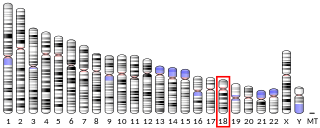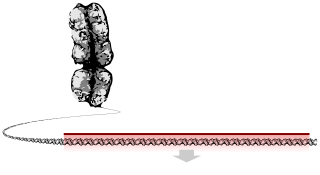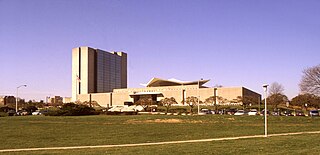
F-box only protein 5 is a protein that in humans is encoded by the FBXO5 gene.

F-box only protein 7 is a protein that in humans is encoded by the FBXO7 gene. Mutations in FBXO7 have been associated with Parkinson's disease.

PHD finger protein 10 is a protein that in humans is encoded by the PHF10 gene.

Lysine-specific demethylase 2A (KDM2A) also known as F-box and leucine-rich repeat protein 11 (FBXL11) is an enzyme that in humans is encoded by the KDM2A gene. KDM2A is a member of the superfamily of alpha-ketoglutarate-dependent hydroxylases, which are non-haem iron-containing proteins.

F-box/LRR-repeat protein 5 is a protein that in humans is encoded by the FBXL5 gene.

F-box only protein 4 is a protein that in humans is encoded by the FBXO4 gene.

F-box only protein 11 is a protein that in humans is encoded by the FBXO11 gene.

F-box/LRR-repeat protein 7 is a protein that in humans is encoded by the FBXL7 gene.

F-box only protein 2 is a protein that in humans is encoded by the FBXO2 gene.

F-box only protein 9 is a protein that in humans is encoded by the FBXO9 gene.

F-box/WD repeat-containing protein 5 is a protein that in humans is encoded by the FBXW5 gene.

F-box only protein 32 is a protein that in humans is encoded by the FBXO32 gene.

F-box/WD repeat-containing protein 8 is a protein that in humans is encoded by the FBXW8 gene.

F-box only protein 24 is a protein that in humans is encoded by the FBXO24 gene.

F-box only protein 6 is a protein that in humans is encoded by the FBXO6 gene.

F-box/WD repeat-containing protein 10 is a protein that in humans is encoded by the FBXW10 gene.

F-box and leucine-rich repeat protein 4 is a protein that in humans is encoded by the FBXL4 gene.

Tripartite motif containing 69 is a protein that in humans is encoded by the TRIM69 gene.

F-box protein 40 is a protein that in humans is encoded by the FBXO40 gene.

F-box protein 15 also known as Fbx15 is a protein that in humans is encoded by the FBXO15 gene.

























